Listen, Antoine, it’s not you. You’re great. You won a World Cup, you helped keep Atlético Madrid in the European elite for years, and you once placed third in Ballon d’Or voting, which given the competition was basically like winning the Humans Only division. But observers of FC Barcelona know better than most that sometimes a great forward can be a bad signing, and that’s why for all your accolades, for all the hoopla around a transfer saga that lasted for two excruciating years plus however long your LeBron knockoff La Decisión video dragged on, haters keep pointing out the obvious: nothing about Griezmann to Barcelona makes sense.
Like all things Barça these days, this is really about Lionel Messi.
For the last few years, Barcelona has had—whisper it softly—a little bit of a Messi problem. It’s not that he’s stopped being the greatest player of all time; if anything his impossible goal production rate last season suggests he’s only getting stronger in his thirties, like Serena Williams or hangovers. The issue is how the team shapes itself around his greatness.
Ever since Luis Suárez’s arrival bumped him out to the right wing, Messi’s been creeping back inside behind his striker, throwing the 4-3-3 off balance. In 2015/16 he attempted 27% of his open play passes in the attacking half from the right wing and 24% from the central fifth of the pitch; by 2018/19 that had flipped to 22% from the wing and 27% in the middle. Instead of receiving on the touchline and dribbling inside to release the ball, Ernesto Valverde-era Messi plays pretty much permanent hookie in the right halfspace, width be damned.
Messi’s drift has had knock-on effects across the squad, as Valverde has looked for ways to spread his attack by rotating workhorse midfielders like Paulinho and Arturo Vidal to the front line or stretching Sergi Roberto to his breaking point up and down the right flank. It’s also changed the way the other forwards operate. Suárez plays a little farther left than he used to, sometimes slipping outside the centre backs to open a channel for Messi.
When Ousmane Dembélé starts, the two-footed winger is as likely to line up outside Messi to the right as he is on the left wing, where an overlapping Jordi Alba is Messi’s preferred target. As for Philippe Coutinho, he’s suffered carrying the ball into Barça’s clogged middle without the skill to combine in tight spaces. It’s hard out there for all these €120+ million attackers just trying to fit in.
Speaking of! You know who else really likes that right half-space where Messi hangs out? That’d be one golden-curled, fuzzy-lipped Antoine Griezmann, whose pass sonars show a taste for exactly the kind of left-footed diagonal pass into the box that’s been Messi’s bread and butter for the last five years or so.
In the viz below, shard length represents open play pass count and lighter colours mean a longer average pass length. Red = a completed pass on the second viz. If Griez were to play for Barcelona the way he did for Atleti last season, he and Messi would literally step on one another’s toes while looking to curl the same balls to Alba or Suárez at the far post.
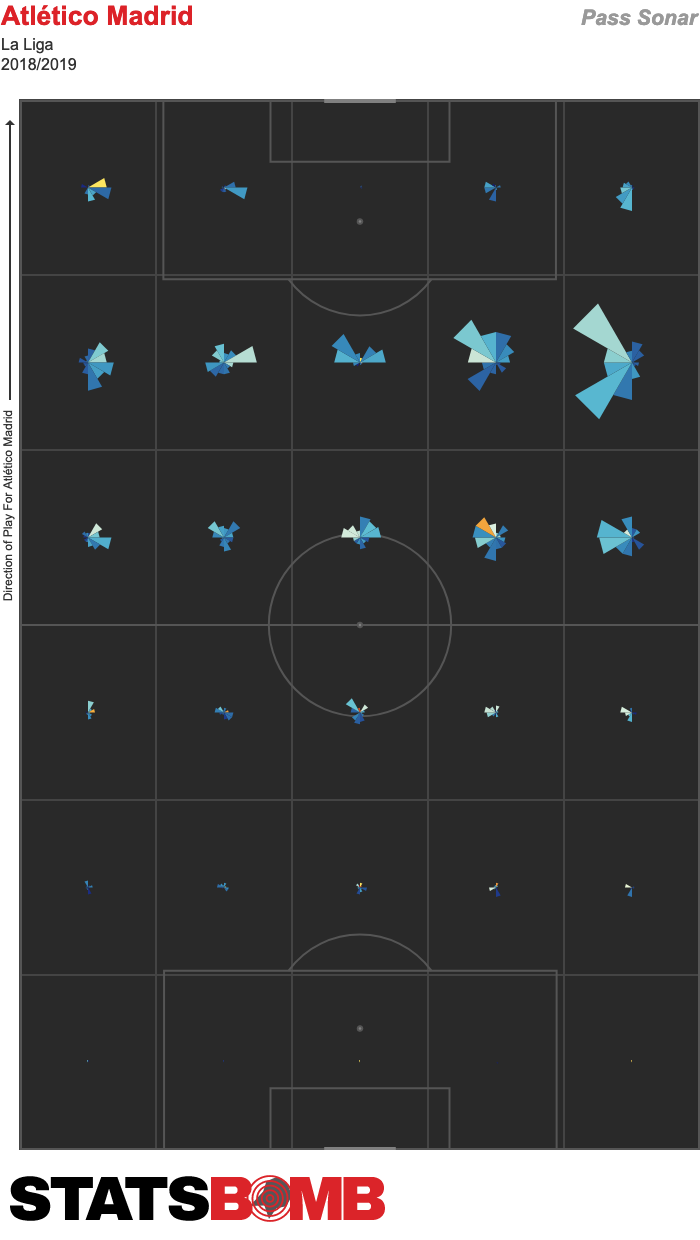

That’s not the only way Griezmann’s skillset is redundant for his new club. Of his 15 goals for Atlético Madrid last season, three came from direct free kicks, three from penalties, and only seven were scored from open play, slightly underperforming his 8.46 open play xG.
Considering they’re about as likely to erect a monument to Luis Figo at the Camp Nou as to take Messi off free kicks or—for better or worse—penalties, Griezmann’s scoring comes with a cap. Sure, Atleti's attack was mediocre last year and sure, playing alongside Messi tends to boost teammates’ numbers, but you’ve got to muster quite a bit more than seven goals to live up to a €120 million price tag.
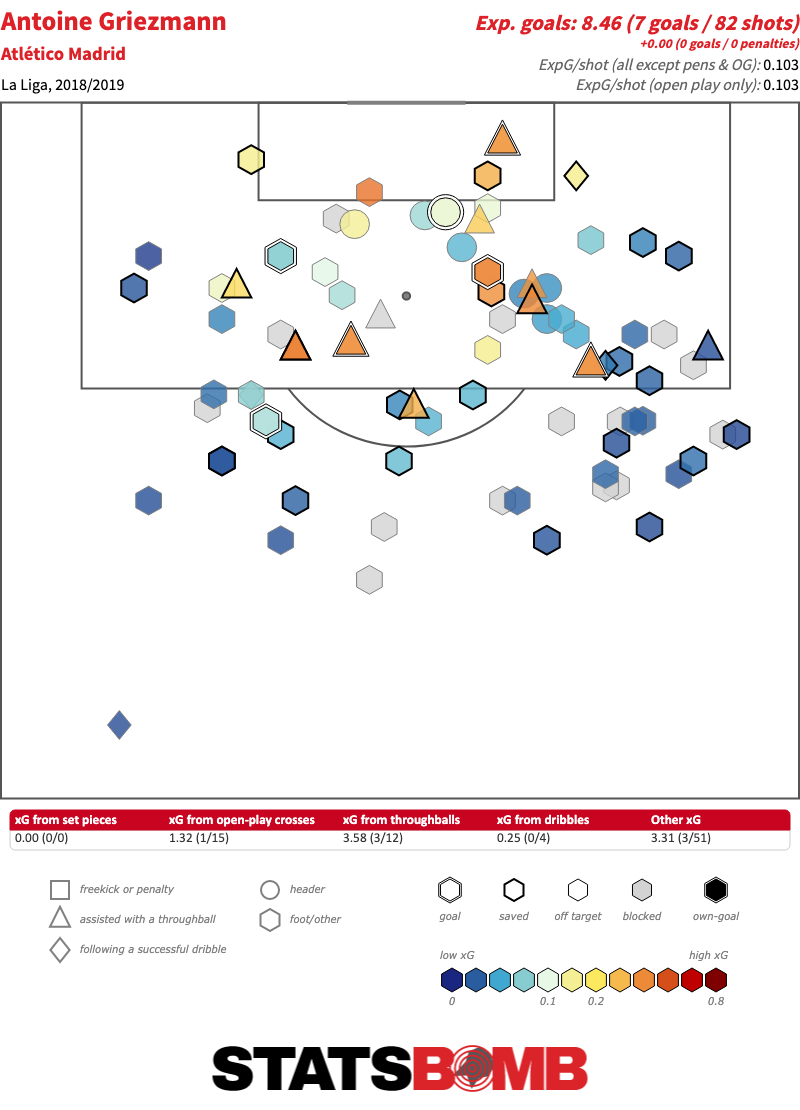
Griezmann’s release clause isn’t his fault, but by paying it Josep Bartomeu and co. put themselves in the precarious position of shelling out the most ever paid for a player over 25 years old on a guy who’ll turn 29 this season.
That’s a problem for one of the most popular defences of the Griezmann signing, that we should think of him more as an understudy than a complement to Messi. Given Messi’s greater versatility and fairly light injury history, there’s no guarantee Griez—whose game depends more heavily on athleticism—will outlast him. Even if he does, he’d be a different type of forward, less comfortable in possession and less, you know, just preposterously good at everything.
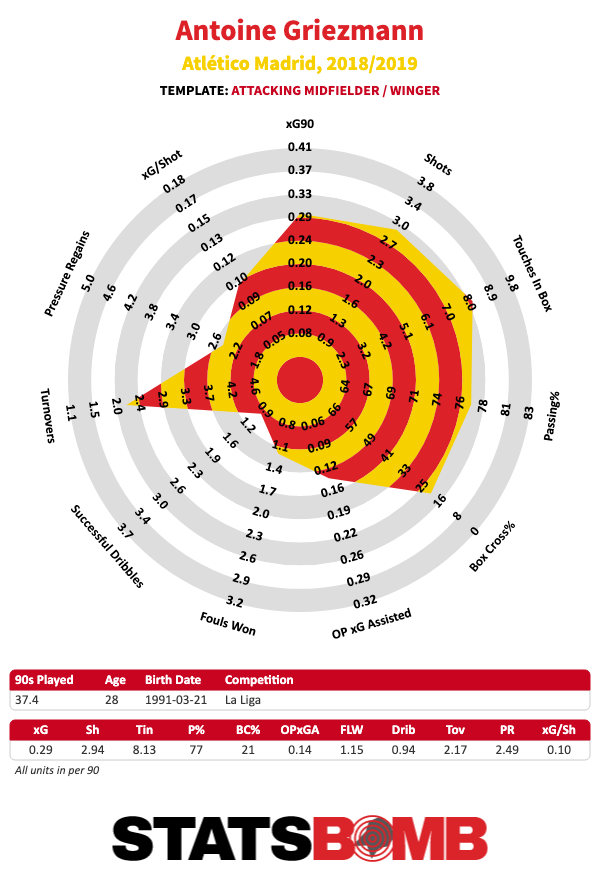
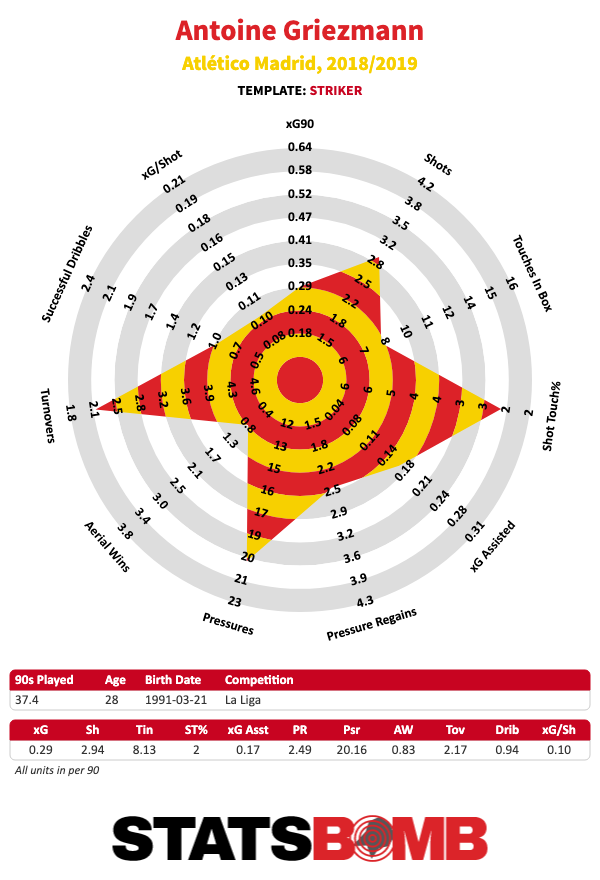
Again, caveats about Diego Simeone’s defence-first style apply, but this is not the profile of a guy who’s going to orchestrate your whole attack. Griezmann last year took and created quality chances at a rate somewhere below your average La Liga attacking midfielder.
He didn’t shoot much from dangerous positions, barely took on defenders, and whatever pressing work he put in didn’t do much to help Atlético Madrid’s vaunted defensive structure recover the ball. After years at a club where a pass completion rate in the mid seventies was no issue, the case that Griezmann’s just going to waltz into Barcelona and play like some long lost La Masia product remains highly speculative.
Under both Simeone in Madrid and Didier Deschamps for France, Griez has excelled in free-flowing, quick-strike attacks that may be Barça’s future but are far from its current ideal. Take a second to scan the longest half dozen Atleti possessions that ended in a Griezmann shot last season—you’ve got what, maybe one or two that looks anything like Barcelona’s patterned attack?
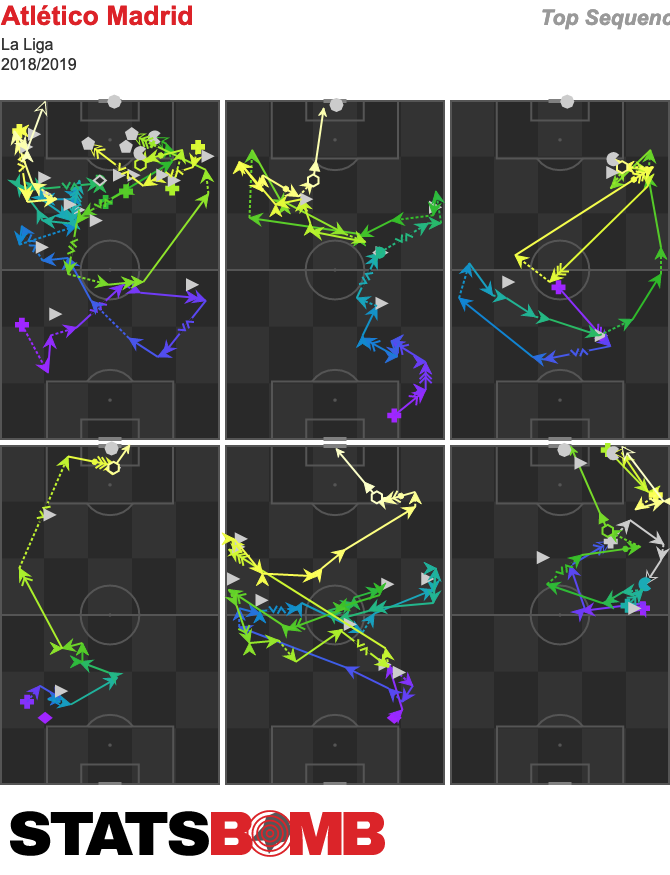
The hope, of course, is that Griezmann will adapt to the players around him, and he’s talented enough that you wouldn’t want to bet against him. But the last decade of big money Barcelona signings shows how hard it is to predict who’ll mesh with Messi—or maybe how little attention the board has paid to on-field needs while chasing transfer hype. Griezmann could be the next David Villa and rediscover himself on the wing (where he got his start with Real Sociedad), or he could be the next Coutinho, a star signing that looks good on paper but makes you want to hurl heavy objects through your TV during the Champions League knockouts.
The fact that Griezmann will never occupy centre backs like Suárez or beat defenders and lay in crosses like Dembélé makes it hard to figure how he fits into Barcelona’s best eleven at the start of this season, but the sheer gravitational pull of the signing pretty much obligates Valverde to figure it out. Will we see a return to the false nine with Dembélé-Messi-Griezmann? A narrow Griez-Suárez-Messi trio with fullbacks providing width? Maybe a top-heavy 4-2-3-1 with Messi at the ten and Frenkie de Jong pulling the strings from a double pivot? Oh and by the way what the hell happens to Griezmann if this whole Neymar thing actually goes through? Literally no one knows! And the La Liga season is already underway! This should be, for the club that just spent a whole armoured convoy of cash on a player with no obvious position, perhaps a source of mild concern!
If anything’s getting culés through these uncertain times, it’s YouTube highlights of preseason games in which Griezmann has looked very much like the player the club hoped it was buying. With Suárez back in the lineup, Griez has started on the left wing and sparked a couple of nice goals in the last Napoli friendly with wandering moves that took him all the way to the other side of Suárez, into his favorite right channel.
But he also lined up on the left for the first half an hour or so in Barça’s first league match of the season, a 0-1 loss at Athletic in which their only chance of note was an opposing player literally passing the ball to Luis Suárez. After Suárez went down Griezmann moved up front and they created little else. The team will fare better when Messi returns, of course, but it might be at the expense of poor Antoine.